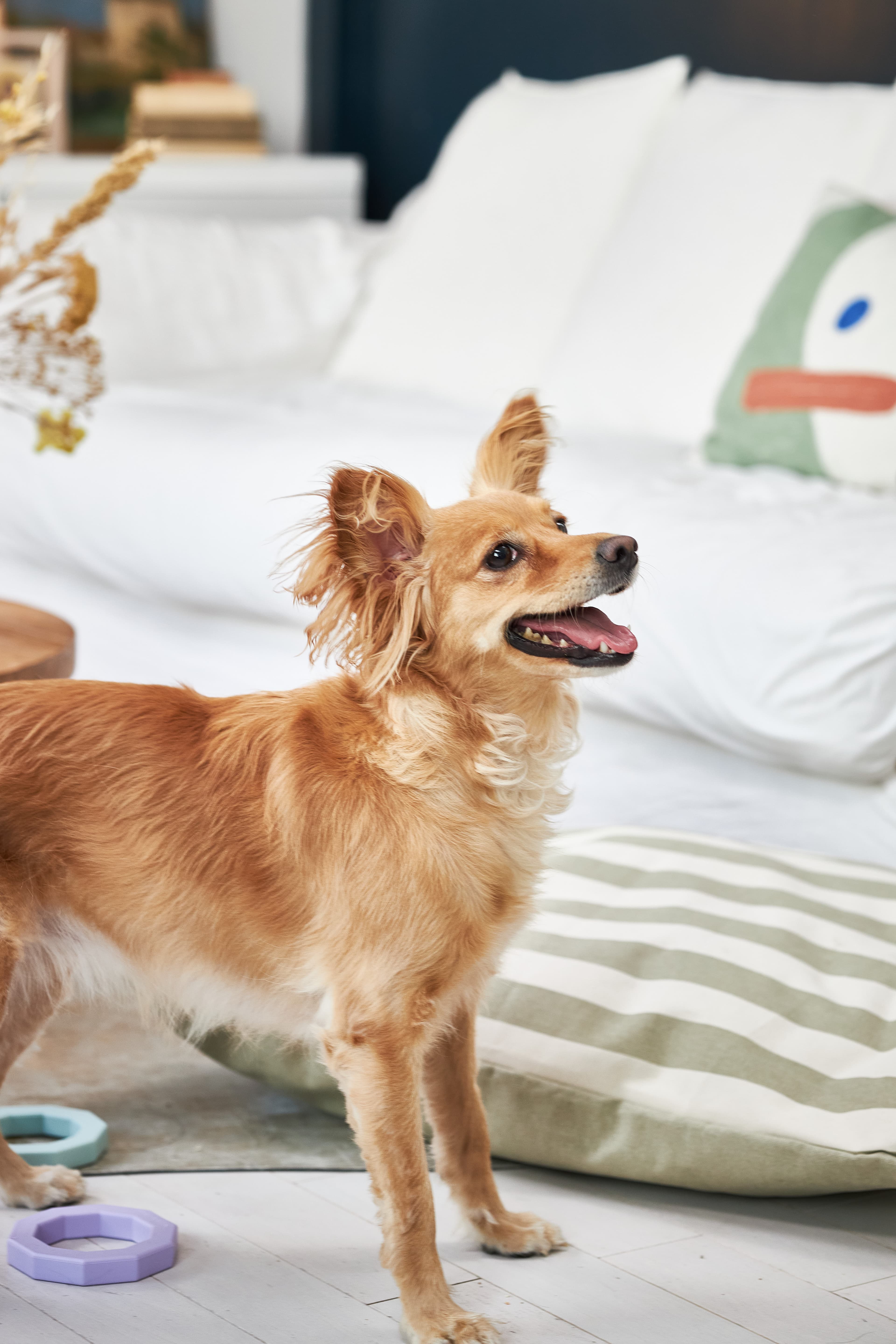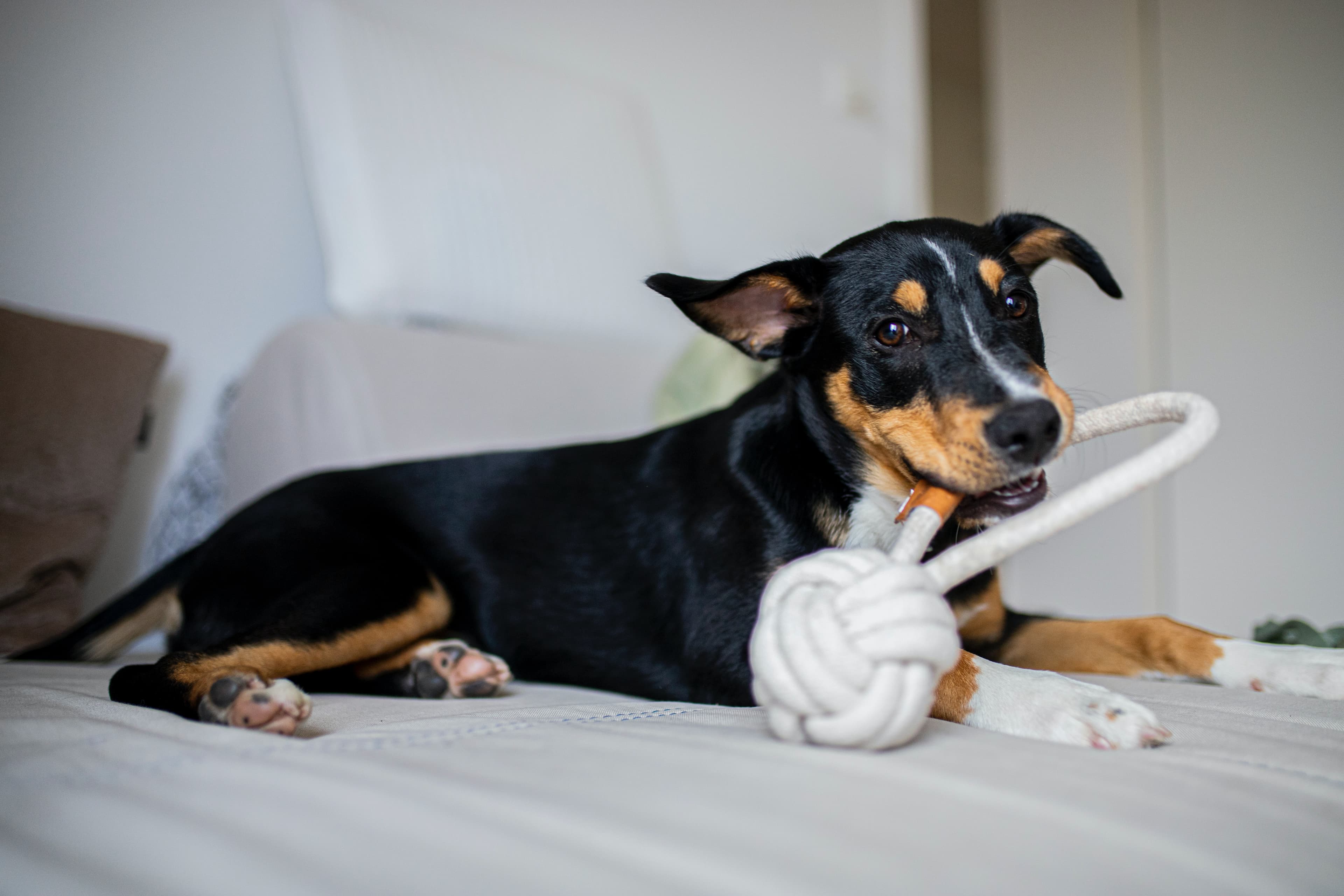How to detect, treat and prevent stress in your dog
Stress, like humans, is a reaction where the dog goes into survival mode. This survival instinct can express itself in four different ways; flee, fan, freeze or flame. We will talk about stress from a bunch of different causes, try to understand the signals that dogs give us and how we can reduce stress in dogs. To avoid stress in our dogs, a balanced daily routine is preferable, read more about it here.
Causes of stress
The dog is under- or over-stimulated
Too many demands, reprimands, failure and not understanding what the dog owner wants
Fighting, conflict and involuntary isolation
Lack of control, fear and anxiety
Not able to do their needs, lack of food and water, sexual needs where drive and hormones come into play
Too much of very high-intensity activation such as ball and stick throwing, agility and fast/tough games
Illness and pain
Sudden changes such as moving away, having a child, new dog in the family
Symptoms of stress
There are many symptoms of stress. We will address a bunch based on a few subcategories. There are more symptoms not listed here that your dog may be stressed.
Physical symptoms
Panting, sleeping poorly, eyes wide open, bloodshot eyes, peeing/pooping a lot or bad stomach, increased thirst, getting dandruff or coat quality deteriorating. The dog may also empty its anal sacs, have tense muscles, reduced appetite and sweaty pads.
Stereotypes
These can be self-harming behaviours where your dog bites himself or licks incessantly. They may scratch themselves unusually and chase their tail. Itching/riding on people, objects or other dogs is 99% a clear sign of stress.
Behaviours
Your dog waddles around and can't relax, becomes untrainable and may lash out even though they have never done so before. The dog will have exaggerated reactions, bite the leash or your arms or have intense chewing and bite furniture.
Dog stress management
When your dog becomes stressed, both thinking and learning are impaired. Your dog's emotions become more nuanced and moderate behaviour is blocked. There are two primary strategies, active and passive, for dealing with stress and what your dog does depends on its genetics. The dog either acts and reacts to their environment, for example with aggression, or they become introverted and depressed. When your dog feels that it can control a stressful situation, it means that it will probably handle stressful situations in the same way in the future.
As mentioned above, past experiences influence the dog's choice of strategy but there are also situations where the dog may feel either hopelessness or helplessness. The dog will eventually stop trying to cope if the answer is always wrong, no matter what the dog does, or the strategies always lead to something negative.
Reduce stress
In order to overcome the dog's stress problems, we need to take a holistic approach and find out all its stress triggers. Below is some general advice that you can try, but seek out a dog psychologist (preferably certified in the Swedish Dog Association) in your area if you feel your dog fits the above description of stress. Then you will need a comprehensive anti-stress plan.
Measures at home
First of all, we want to give the dog the conditions to calm down in a healthy way. Therefore, it can be helpful to provide access to plenty of chewable bones as they are calming for our dogs. Increase the number of meals to ensure your dog is getting nutrition on more occasions and, if possible, use adaptil (available in pet shops) in the home to create a calm space for your dog.
It may be a good idea to add proper rest, at least 4 hours, between your activities. Introduce 2 rest days/week where your dog is not allowed any activities/walks.
Activation and training
Play quiet games and avoid overly heated rewards such as ball and stick throwing. Instead, hide toys and give the dog opportunities for nose exercises. If you are training or competing, it may be a good idea to pause for a while to find the balance your dog needs in everyday life. Then you can reintroduce more strenuous activities and remember to give rest after the activity.
Punishments
Remove all punishments and bans, big or small. Pick out a few points to focus on and stop nagging your dog. It's easy for nagging to become part of everyday life with a stressed dog. Find other ways to deal with the situations where nagging and punishment come up. For example, limit spaces, use a harness on walks and enrich the dog's environment.
Exercise and movement
This is a very important element for dogs with excessive stress levels. The dog needs exercise and movement but not just any exercise. Here it is super important that your walks allow the dog to be loose/loose and to choose its own pace in varied terrain. How long you need to give your dog exercise depends on how your dog behaves after the walk; is it calm and content and





